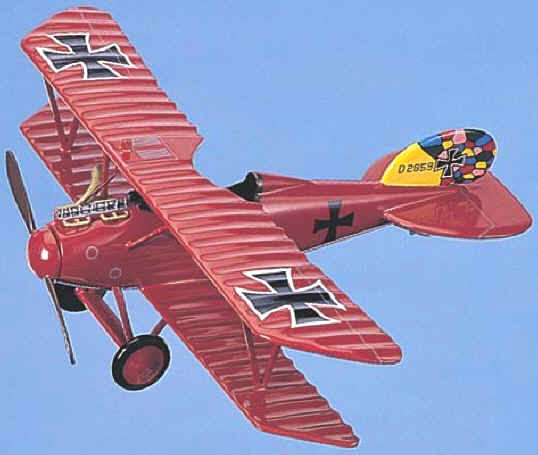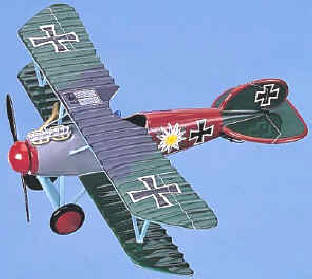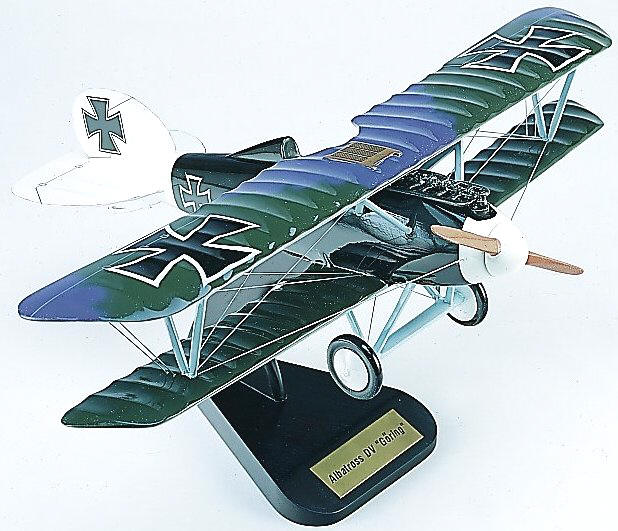|
|
|
 |
Albatros D-III,
D-IV |
 |
The Albatros series
of single-seat fighters were among the most numerous and
distinctive aircraft of the First World War. The Albatros Werke
began to build airplanes in 1910. Early in the war , the firm
focused on two-seat observation types, but in 1916 introduced
the Albatros I fighter, which was quickly replaced by Albatros
II. The Albatros D III was introduced early in 1917.
It was easy to fly and was an effective combat aircraft.
The introduction of the British RAF S.E. 5 and the French Spad
VII challenged German air superiority in mid-1917. The
Albatros IV was soon introduced. It was more streamlined, had a
resigned rudder and a larger engine.
Approximately 4,800 Albatros fighters
of all types were built during World War I. They were used
extensively by the German Air Service throughout 1917, and
remained in action in considerable numbers until the end of the
war. Many of the highest-scoring German aces achieved the
majority of their victories while flying them. Although most
often associated with the novel Fokker Triplane, the famed Red
Baron, Manfred von Richthofen, won three-quarters of his 80
combat victories in Albatros aircraft. Despite the large
production only two have survived; both are D.VA models. One is
at the Australian War Memorial Museum in Canberra,
Australia. The other is in the collection of the National
Air and Space Museum. It was brought to Washington, D.C.,
in 1952 and remained in storage until restoration began in
January 1977. The complex rebuilding was completed in February
1979. It is not currently on display. |
|

|
Albatross D-V "Red Baron"
Premier Series. 1/21st scale. 16" wingspan x
13.5" long.
No.ACG3D-AR. Only $219.95 |
 |
Albatross D-III "Flower"
Premier Series. 1/21st scale.
16" wingspan x 13.5" long.
No.ACG3D-CR. Only $219.95
|
|
|

|
Albatross D-V "Goring"
Deluxe Series. 1/20th scale. 17.75" wingspan x
14.5" long.
No. ACG3D-DX. Only $179.95
|
|
